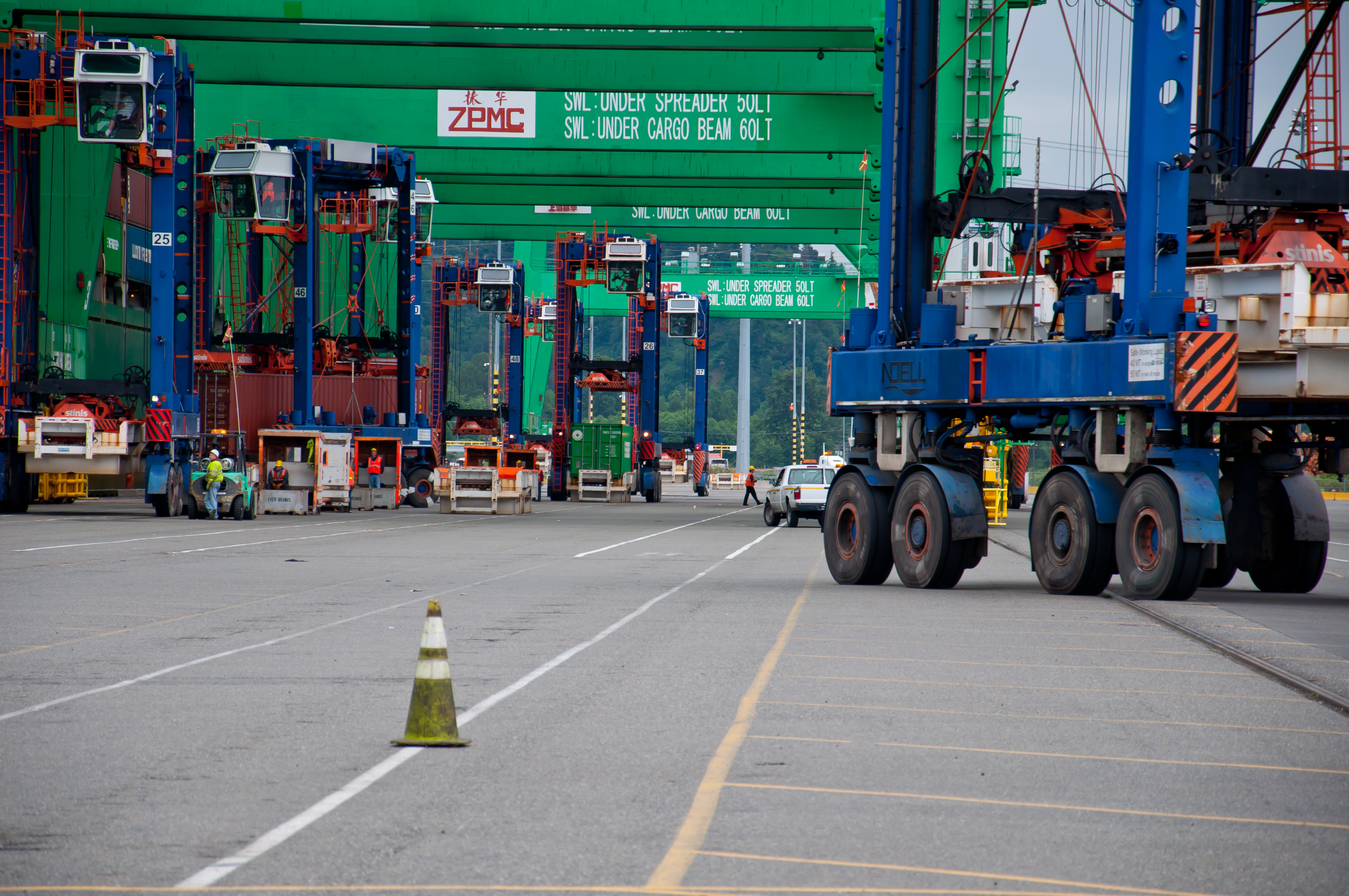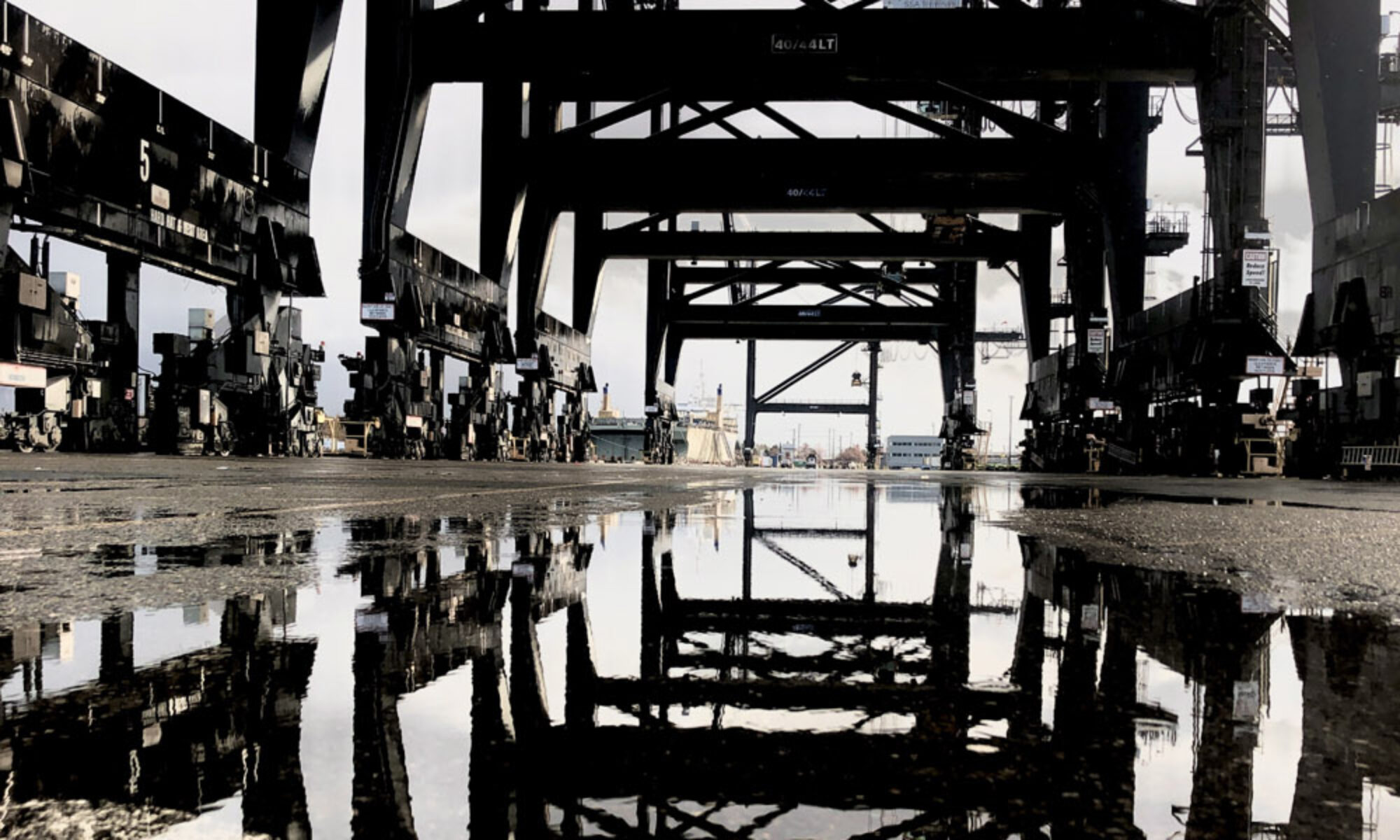
To recap, Vancouver has a slight edge in certain factors like the cost of transiting terminals, they have more large super-post-Panamax cranes, they have slightly better rail delivery rates through state-subsidized Canadian National Rail, slightly better productivity, and they get a break of about $100 per container on Harbor Maintenance Tax. And they have massive plans for expansion.
One of the most obvious things we can do to improve our competitive position is to improve our productivity, and having modern, state of the art equipment would make it a lot easier. The slight edge Vancouver enjoys in productivity could easily be attributed to the fact that they’ve spent a lot of money upgrading their cranes and yard equipment.
The Port of Tacoma, by comparison, seems intent on draining every last, little penny out of their investments. A good example would be the port-owned cranes. The cranes at Husky (Pier 3 and Pier 4) and Olympic Container Terminal (OCT – Pier 7) are on the average 27 years old. At they’re not tall enough to work the current ships in rotation when they’re fully loaded (unless it’s at low tide). They’re not strong enough to pick up heavy loads (like twin 20-foot containers). And they’re slow. How can you have a world-class port and world-class productivity when the equipment you’re using are antiques?
The non-port owned cranes at APMT (Maersk – the former SeaLand) are in the same boat (circa mid-80’s), and the four older cranes at Washington United Terminal (WUT) aren’t that much newer. They all need to be replaced.
While the Port of Tacoma has rebuilt Pier 3 and is in the process of realigning and rebuilding Pier 4 to provide berth space for two mega-ships at the same time – which is great – it still hasn’t come up with any truly meaningful plan to deal with the larger ships. The port only has four super post-Panamax cranes on order for Pier 3 and while that’s a great start, it’s still not enough to even deal with one of the 15,000+ TEU ships, much less two.
The shipping lines whole business model is predicated on getting in and out of port quickly. A typical port call for a container ship might last 2 or 3 days. The maximum time in port is typically 4 days. With just 4 cranes working, it could take as much as 12 days, working day and night, to fully discharge and load a mega-ship. That’s obviously unacceptable.
In LA, they’ll be working the 18,000 TEU CMA CGM Benjamin Franklin with 9 cranes.
The Pier 4 – Husky yard would also still be too small to meaningfully deal with even one mega-ship. The 18,000 TEU ships can discharge as many as 10,000+ moves and at 93 acres, the Husky yard just couldn’t absorb that kind of volume.
One of the catch phrases I’ve heard used in the last year by Port of Tacoma officials is that they envision a future where instead of five container terminals, we consolidate the operations into just three larger yards. That’s a nice thought. I’ve read the minimum sized yard to be able to efficiently work the new mega-ships and absorb the huge surges of cargo they generate is something like 200 acres. So in theory, combining yards would help prepare for larger ships. But is it workable?
To that end, the port has actually published a drawing of a consolidated and reconfigured Husky and OCT (which they call the General Central Peninsula Terminal) in their NW Seaport Alliance Strategic Business Plan – 2015 (page 14) : 
According to officials at the port, this drawing is very preliminary and would only be seriously contemplated if there was new demand. I’m glad they recognize that moving the North Intermodal rail yard (NIM yard) is the only workable way to consolidate OCT and Husky. This configuration above would create an 173 acre yard.
A better way to configure the peninsula would be to move the rail yard (and the port maintenance buildings and everything else) all the way across East 11th street. The parcel between the South Intermodal rail yard (SIM yard) and Port of Tacoma Road, bordered by Ross Way could accommodate 15 1,800 Ft long tracks – a bonus of some 2,000 Ft of track. Doing that would also leave the Pier 7 dock available for containers, breakbulk or autos. And, it’d create a full 200 acre yard. The main problem with this approach of course, is that not all of the property across East 11th is owned by the port. But that’s not insurmountable.
Farther up the waterway, while there’s been talk of combining WUT and Pierce County Terminal (PCT) into one yard, I don’t see any reasonable way to make that work. They’re just not situated properly to work as one single terminal.
Looking at PCT itself, the only thing that makes sense for expansion there is to go ahead with the original 2005 Phase 2 plans which would add 53 acres of yard and 13 acres of rail yard (the former Portac property across Alexander). That acreage and the addition of a few more super Post-Panamax cranes would make PCT ready and able to deal with the 18,000+ TEU megaships.
Another expansion possibility at PCT would be to use the former Kaiser smelter property. That’d be a natural.
Finally, I don’t see the APMT yard being combined with any other, but here again, there’s plenty space for expansion available there. If the East 11th Street viaduct was torn down and the Milwaukee Avenue right-of-way was vacated, you’d have a yard that was around 185 acres with adjacent on-dock rail. Or potentially, even more.
That would give Tacoma three approximate 200 acre terminals, all with on-dock rail. With those changes – new cranes and reconfigured yards, Tacoma would truly be mega-ship ready. We could compete with any port in the world.
The obvious place to start would be finish the General Central Peninsula, combining Husky and OCT, and moving the NIM yard.
What we cannot do is just roll over and let the Canadian ports rake in all the business. We must be bold and audacious.
We have to aggressively match what the Canadian ports are offering, in terms of facilities and service. And if the present Port Commission doesn’t have the vision or wherewithal to pursue this more aggressive path, then we have yet another reason (of many) to replace them.
